The rainbow trout is now one of North America’s top five sport fish. One of the most recognizable gamefish, their rainbow-splashed sides flash brilliantly as they dart through clear streams or rivers.
Trout fishing is popular and suitable for all age and experience levels. And even with variations in the size of trout caught, we all know that bigger is always better when it comes to fishing. Here, you will discover the largest rainbow trout ever caught.
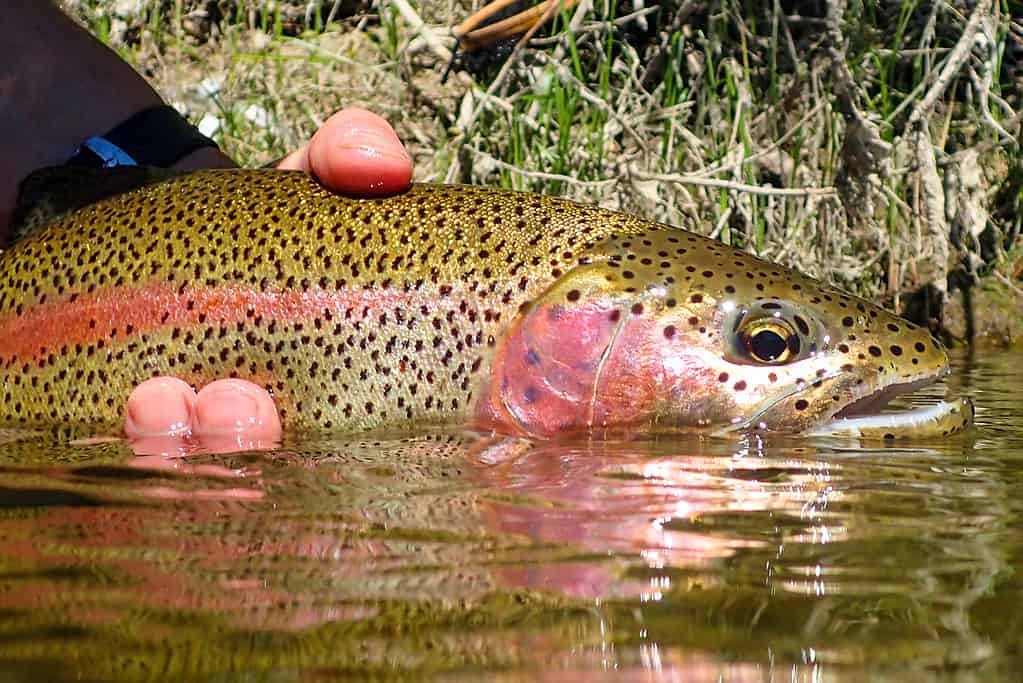
The unique coloring of the Rainbow trout makes it one of the most recognizable gamefish.
©christiannafzger/iStock via Getty Images
The Largest Rainbow Trout Ever Caught
The largest rainbow trout ever caught weighs in at an impressive 48 pounds. It was caught on September 5th, 2009, out of Lake Diefenbaker, Saskatchewan, Canada. Sean Konrad reeled in the beauty using a plug-type lure. The tug-of-war battle lasted about 30 minutes before Konrad landed the record-breaking rainbow trout. The 48-pound beauty shattered the previous rainbow trout record and measured 42 inches long with a 32-inch girth.

The largest rainbow trout on record checks in at a whopping 48 pounds.
©Kanur Ismail/iStock via Getty Images
How Konrad Caught The Biggest Rainbow Trout
Sean and his brother Adam are fond of night fishing, and they were at it again this particular night. A little after 11:00 PM on September 4, 2009, the brothers were fishing on Lake Diefenbaker. Sean hooked what felt like a lunker of a fish on a jointed Rapala X Rap, a fishing plug that makes a swimming motion when trolled or reeled in.
The brothers realized the possibility of this being a record when they got the fish into the boat. Because these two avid fishermen have other records between them, they carry an International Game Fish Association (IGFA) certified scale aboard their boat. The scale didn’t stop until it pegged the 48-pound mark. They immediately put the fish on ice, anxious to get an official weigh-in and ceremony the next day.
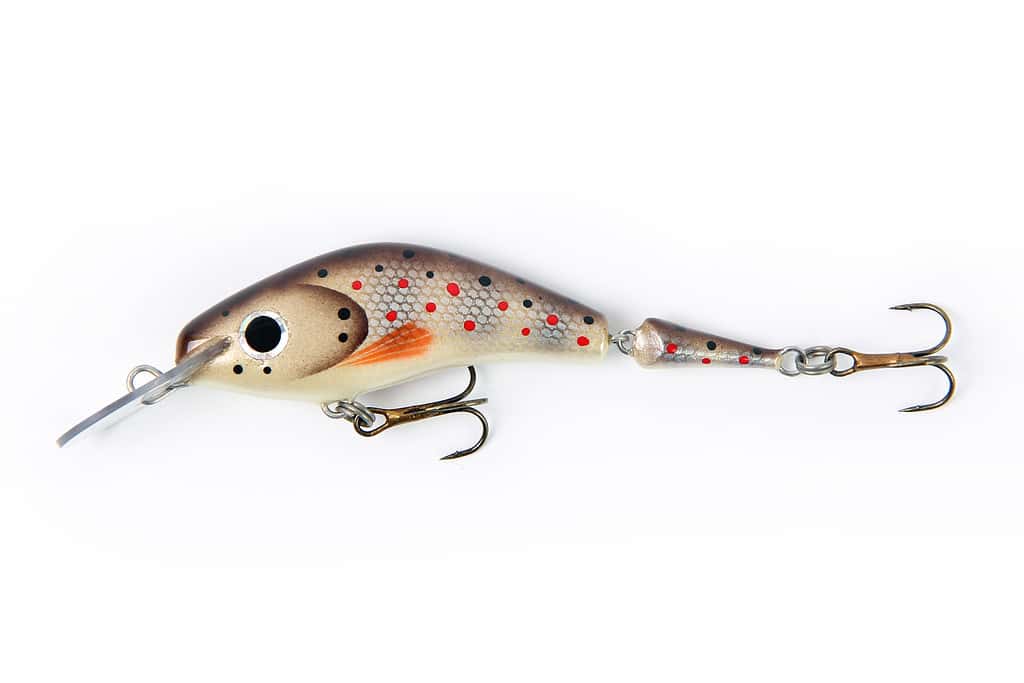
Jointed fishing lures mimic the natural swimming movement of baitfish.
©AlkomRS/iStock via Getty Images
Other Notable Rainbow Trout Catches
Although Konrad’s 2009 record-breaking catch is impressive, other notable rainbow trout were caught in various lakes worldwide.
- Just a year earlier, in 2008, a 44-pound rainbow trout was caught in the same lake where Konrad snagged the record breaker.
- In 2013, a 42-pound rainbow trout was pulled from California’s Lake Tahoe.
- A 36-pound rainbow trout was caught in 2008 from Lake Taupo in New Zealand.

Lake Tahoe produced a 42-pound Rainbow trout in 2013.
©mindhive/iStock via Getty Images
World Record Backstory Breeds Controversy
How this record rainbow trout came to be so large has a bit of a backstory, and for a while, was the cause for controversy over whether the fish should be included in the record books. Lake Diefenbaker is an artificial reservoir. It is long and narrow, reaching 140 miles long but only about four miles across at its widest point. It is one of only two places in Saskatchewan with a reproducing population of rainbow trout.
These record-breaking trout, however, are likely the result of a wind and ice storm that caused significant damage to the holding pens at CanGro fish hatchery in 2000, resulting in thousands of genetically engineered and sterile triploid rainbow trout making their way into Lake Diefenbaker.
The sterile fish are not interested in spawning, spending all their energy on feeding. Without the extra energy and stress of the spawning cycle and associated behaviors, the fish continue to grow and gain weight, creating larger-than-average rainbow trout. The controversy was short-lived, however, when the IGFA made no rulings against allowing these fish into the record books.

Landscape featuring Lake Diefenbaker from Saskatchewan.
©IanChrisGraham/iStock via Getty Images
About the Rainbow Trout
Rainbow trout belong to the Pacific trout and salmon subgroup of the salmon family (Salmonidae). Related members include the cutthroat, redband, and golden trout. Although they can grow very large, as the Konrad brothers can attest, the average rainbow trout weighs about eight pounds and is 20 to 30 inches long.
Their shape is torpedo-like, with larger, mature males sporting the recognizable, hooked snout. Rainbow trout have a base color of blue-green or yellow-green, contrasting perfectly with the pink rainbow band flowing along their sides. Their underbelly is white, and their back and fins show small black spots.
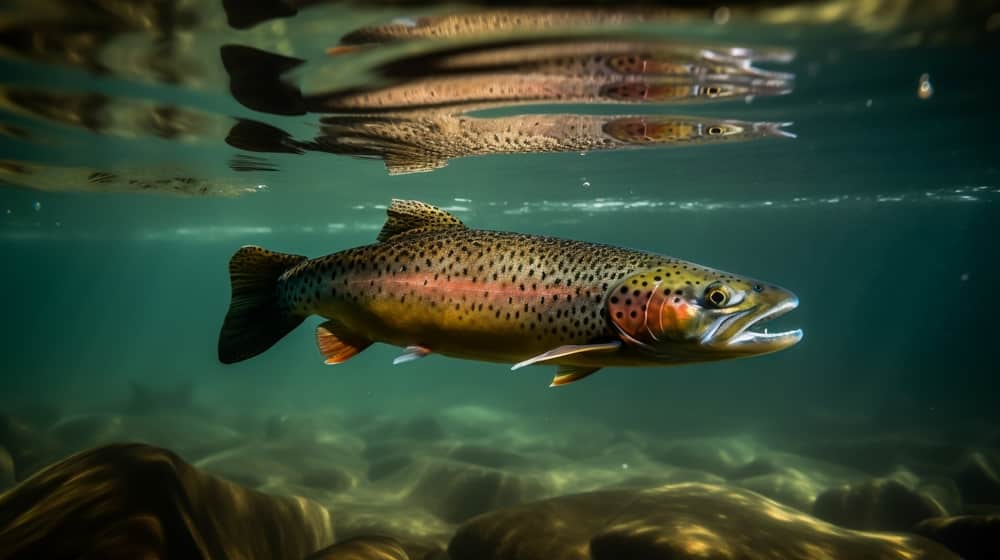
The rainbow trout features a layered palette of colors.
©Henrik A. Jonsson/Shutterstock.com
Habitat and Range
Rainbow trout prefer cool, clear streams, rivers, or large freshwater lakes and reservoirs. They prefer open run areas where they can feed at the surface. Rainbow trout are native to Northern California, the Pacific Northwest, western Canada, and Alaska. They are Nevada’s most abundant game fish, found in almost 300 streams, rivers, lakes, and reservoirs statewide. Due to its popularity as a game fish and sustainable food source, the rainbow trout is now in every major continent except Antarctica.

Rainbow trout prefer cool, clear-running streams and rivers.
©Sandra Burm/Shutterstock.com
Diet
Rainbow trout are, first and foremost, opportunistic feeders. They readily consume drifting aquatic or terrestrial insects that fall into or find their way into the water. Additionally, rainbow trout eat fish eggs, crustaceans, and worms. Larger fish will also eat other smaller fish as the opportunity arises.
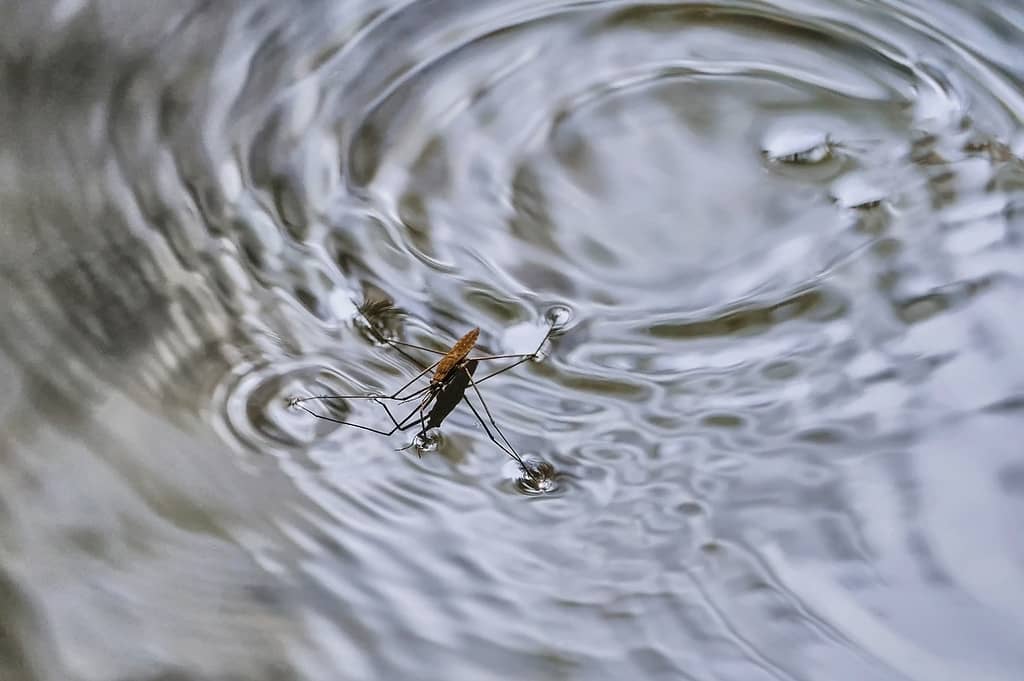
Rainbow trout are opportunistic eaters, consuming insects, worms, fish eggs, and other fish.
©JanMiko/iStock via Getty Images
Threats and Predators
Rainbow trout are more sensitive to water changes like acidification than other trout species. Additionally, they regularly compete with other species for habitat while staying aware of their natural predators. Northern water snakes, mink, kingfishers, herons, and otters are attracted to the same habitat that holds rainbow trout, making them the fish’s most common predators.
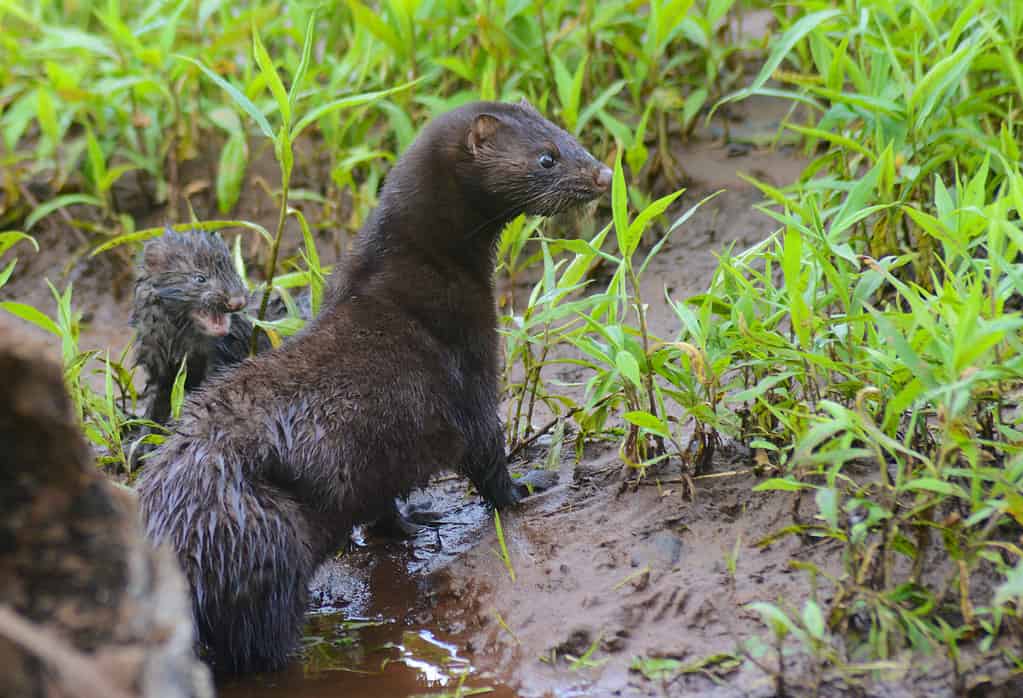
Rainbow trout’s natural predators include mink, heron, kingfishers, otters, and northern watersnakes.
©Betty4240/iStock via Getty Images
The photo featured at the top of this post is © iStock.com/Max2611
Thank you for reading! Have some feedback for us? Contact the AZ Animals editorial team.






